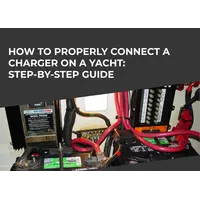topRik team shares their experience of significantly extending the life of mooring lines. Modern synthetic mooring lines have many advantages compared to ends made of other materials. But a full set of mooring ropes for even a medium-sized yacht is not a cheap pleasure, so ideally you want to replace them as rarely as possible. And for this, mooring lines should be properly stored and used.
And who said that cables made from plant materials or steel wire are less expensive for a sailor than synthetic options? Therefore, we also talk about caring for cables made of natural fibers and their steel “colleagues”.
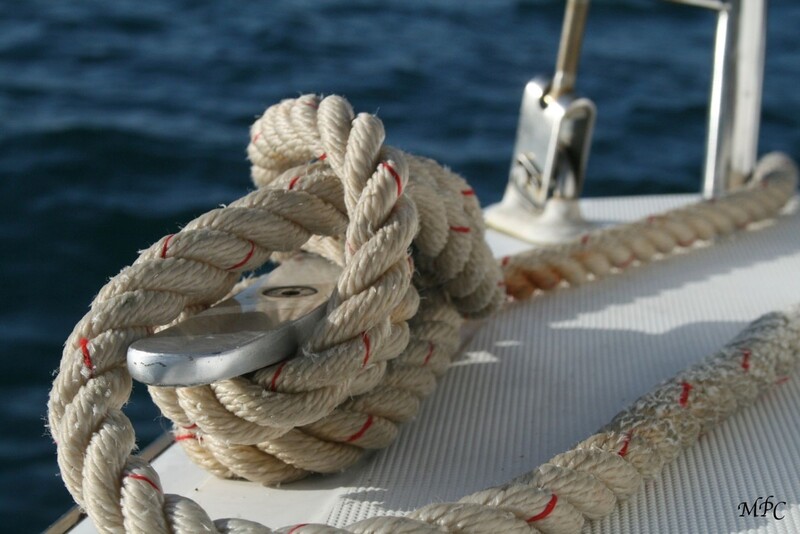
Of course, we will definitely recommend accessories that will make it easier for you to care for moorings and the mooring process itself. You will save your hands from cuts when cleaning cables from silt and shells using of ropecleaner , which can easily handle this unpleasant process. And you can easily raise the mooring lines mooring with of rotating mooring hook, if necessary, quickly remove the anchor. At the same time, your back and arms will not be harmed, and the deck will remain clean.
Basics of Mooring Rope Maintenance
On ships owned or operated by truly experienced sailors, it is almost impossible to see old, worn-out mooring lines or loose ends scattered across the deck. Practice shows that it is not only the so-called life-support systems of a yacht, such as the electric one, that require careful care. A number of tragedies associated with storms and hurricanes in harbors and equipped marinas indicate that mooring lines also play a role in ensuring the safety of the crew and the vessel itself.
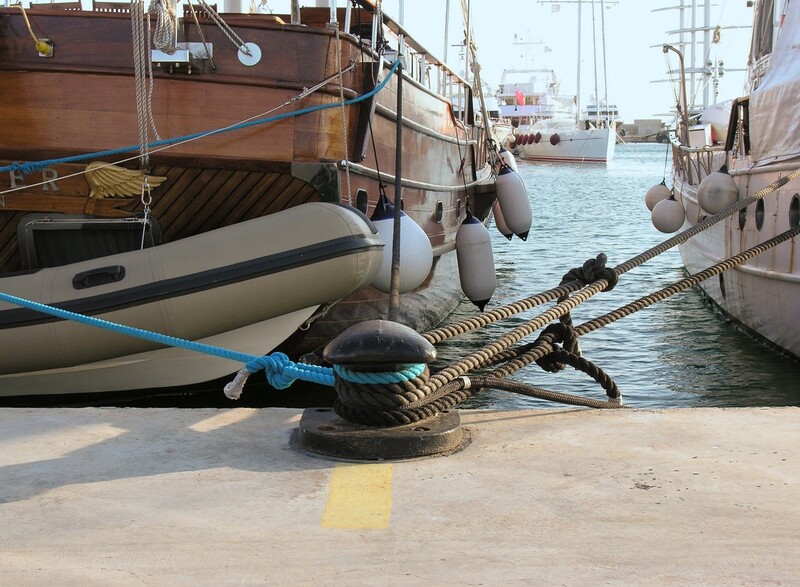
Why Do You Need Cable Maintenance?
No matter how strong the wind or high the waves, your yacht must remain in its mooring place. Therefore, under no circumstances use old cables or sheets as moorings - their wear can make itself felt at the most inopportune moment.
The sheets also don’t stretch well and don’t soften the jerks at all. Securing your boat with old and insufficiently strong cables is the same as deliberately driving a car that is obviously faulty: it, of course, can and will work out, but in any case the risk increases several times.
Only proper operation and care of mooring lines will extend their service life, which means they will ensure reliable mooring and protect your boat. An improperly moored boat may be at risk from drifting with the mooring buoy, being carried out to sea, hitting a pier wall or finger, colliding with adjacent vessels.
The danger to crew members who may be on the yacht at the time ranges from nervous stress and injury to death from being struck by the yacht's structure or falling overboard.
Now that we have thoroughly intimidated you, let's figure out how to avoid such tragedies, among which paying for damage to a neighboring yacht is not the most difficult loss.
Main Threats to Cable Condition
The main threat to the condition of a mooring rope made of any material (steel, synthetic, vegetable) is wear from friction. Therefore, you should follow the recommendations for the operation of moorings, which will help extend their service life.
Friction Wear
Some vessels, such as boats with metal hulls, use steel cables. So let's start with them.
Steel cables are carefully inspected at least once a year, as well as after each vessel is moored in difficult conditions, for example, after a storm in the harbor, when the vessel was moored at the pier, or at sea when moored at a “dead” anchor.
A metal cable must be immediately replaced if a strand has broken, or more than 10% of the wires have been torn over a length equal to eight of its diameters, or if the cable is excessively deformed.
If rust deposits are found on the cable, you should clean this section of the cable with a steel brush until it shines and then wipe it.
Corroded cables must be replaced immediately. You cannot leave the protruding ends of broken wires on the steel cable; they must be cut short or tucked inside the cable.
Any cable contaminated with soil or silt must be doused with fresh water and dried before reeling onto the reel, since the remains of soil, silt, and especially shells, accelerate abrasion.
If the mooring rope is heavily overgrown with shells and silt, use special devices. The topRik marketplace offers the cleaner of overgrown marine ropes. This ropecleaner was recognized in the DAME Design Award competition, where the best products for the yachting industry are selected, tested and awarded. Our team confirms its usefulness - it thoroughly cleans your moorings and takes care of the integrity of your hands, since even when working with gloves, you can cut your hands while cleaning the cables from shells.
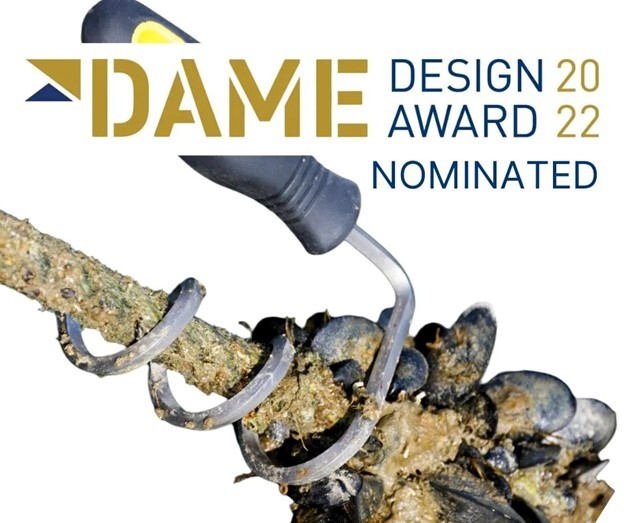
It is recommended to replace the synthetic cable with the following defects:
- twisted three-strand moorings - if in the working part along a length equal to eight cable diameters, the number of breaks and damages is 15% or more;
- for twisted eight-strand ones - if in the working part along a length equal to ten diameters, the number of breaks and damages is 15% or more of the total number of threads in the new cable.
The lights on the cables must be covered with canvas.
Proper operation is of great importance to extend the service life of mooring ropes due to maximum protection against abrasion.
To avoid local creasing and excessive bending of the steel mooring, it is impossible to simultaneously pass several cables of the same direction into hawse and bales, to break the cables through sharp edges, or to fasten them to single bits.
If the mooring line experiences friction in one place for a long time (in a bale, hawse, etc.), then it is recommended to wrap this section of the cable with canvas in several rows. You can use a piece of an old fire hose about 2 m long, cut lengthwise. After the mooring line is taken to the stopper, the hose is attached to it at the hawse itself, and when the stopper is released, it will be located in the hawse.
If the cables are not protected by canvas, old mats should be placed under them in hawse and bales. To prevent the steel cable from twisting into the spring, it must be placed on a turret windlass alternately from above and below, and on the capstan - either clockwise or counterclockwise. It is recommended to periodically change the ends of the mooring lines so that they wear out more evenly.
In order to avoid sliding of the tense synthetic cable on the turret of the mooring mechanism or on the bollard and its possible melting due to strong friction, it is necessary to apply at least three hoses to the turrets, and at least six to the bollard. For the same reasons, you should not pull the cable on the turret; you need to loosen it by rotating the mechanism in reverse.
Twisted three-strand cables of direct release when applied to bollards and bits must be wrapped in a clockwise direction.
Mooring lines made of synthetic ropes must be equipped with stoppers made of the same material as the mooring lines, and, as a rule, from braided eight-strand ropes.
The stopper must be twice as thin as the mooring rope, and its breaking force must be at least 30% of the breaking force of the mooring line. It is strictly forbidden to place chain stoppers on synthetic ropes.
During cargo operations, it is necessary to ensure that all mooring lines are covered equally and are not excessively slack or too tight. You need to pay special attention to the mooring lines if the ship is in a place where there are fluctuations in the water level due to the ebb and flow of the tides.
In these cases, it is recommended to use vegetable or synthetic cables as moorings.
Proper Mooring Prevents End Wear
When mooring a yacht at a pier, do not forget that the basic principle here is that the more ends, the better, especially if the water area is characterized by tidal currents or storms.
Additional ropes, such as a spring tied to a cleat between two yachts, help relieve some of the stress from the main mooring lines. In addition, the length of all ends that go to the pier can be adjusted without climbing onto the boat, which is not always possible during a storm.
By following the recommendations that the topRik team has formulated, guided by its own experience, you will avoid damage to the mooring cables, but most importantly, keep your yacht and the one next to you intact.
The location and fastening of the mooring ends depends on the location and type of anchorage. In addition, when mooring, it is always important to keep in mind possible changes in weather conditions, such as changes in wind direction.
Mooring on stilts. The stern mooring line should not slide upward on the pile. Secure it with a loop, and the short end at the top will prevent the knot from sliding down.
Along the pier. The bow and stern springs keep the yacht from moving, the bow and stern moorings work as shock absorbers and relieve part of the load from the springs. Additional ends prevent possible rotation of the yacht.
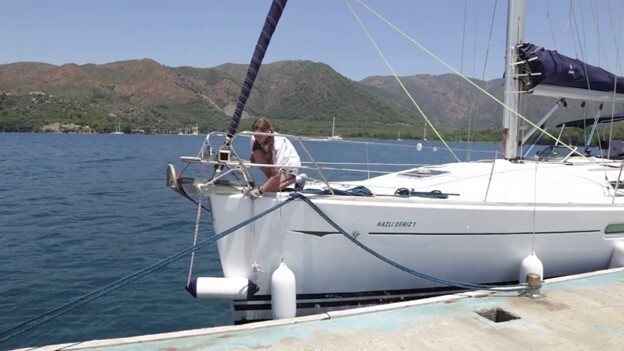
At the boom. When mooring at a dividing boom, which is shorter than the yacht, the bow and central springs are very important, which can slow down the yacht. Before a storm, it makes sense to extend additional ends to the shore and to the neighbor (with his permission, of course) to ease the lateral tension.
At the boxes (near the piles). Standard mooring with stern and bow mooring ends. If the stern ends are crossed, the stern will unfold less. In very short boxes, stern springs may also be necessary.
Using deadweight anchor. Mooring on a deadweight or stationary anchor is not particularly different from mooring in a box: the main load is taken by the stern springs, and the crossed stern moorings prevent lateral displacement.
Exposure to Ultraviolet Radiation
All cables laid in coils on benches must be covered with covers from exposure to sunlight. But if steel cables can simply overheat, then mooring lines made of natural fibers can dry out, and some synthetic ones do not tolerate ultraviolet radiation at all. We are primarily talking about polypropylene edgings, which literally decompose in sunlight, but have excellent resistance to chlorine.
Therefore, if you plan to frequently visit sunny regions, choose nylon and polyester for mooring ropes - of all the options, they are considered the most resistant to ultraviolet radiation. Depending on the purpose of the vessel, other possibilities of harmful effects on mooring lines should be considered. So, nylon mooring lines should be protected from the effects of drying oil, phenol and coal tar.
And to prevent sparking when working with synthetic ropes on large ships, mooring lines should be regularly doused with seawater when the sailing schedule allows, since the ropes must dry well before they are used for their intended purpose.
Moisture and Salt Water
The effects of moisture and salt especially affect the condition of moorings made of steel wire and natural fibers. The first ones rust, the second ones rot. Of course, this happens when mooring lines do not receive proper attention and care.
To avoid corrosion of steel mooring cables, they should be regularly doused with fresh water, washing off the salt, and lubricated in friction areas. But it is better, as already written above, to provide these places with protective sleeves.
In the case of steel ropes, so-called marine or electrochemical corrosion may occur if the boat hull is aluminum and the steel wire does not have a protective layer.
Mooring ropes made from plant materials require regular washing with preliminary cleaning of bottom microflora and fauna. After washing in fresh water, the plant ropes should be spread out thoroughly to dry completely. But this should be done out of direct sunlight, in a dry, well-ventilated place.
Synthetic ropes are the most resistant to sea water, but among them there is a champion. These are polypropylene mooring lines that withstand sea salt, do not sink, and have a low specific gravity with a high maximum breaking load.
But synthetic mooring lines also require maintenance. Regular cleaning of bottom growths, washing, dousing with fresh water and drying thoroughly. True, they do not need to be laid out on the deck or suspended. After the water has drained, it is enough to place them in a storage place in a locker or on a shelf until completely dry.
Regular Inspections and Checks
The surest way to prevent problems associated with broken mooring ropes is to regularly inspect them, repair the damage if possible, or replace the mooring ends.
Frequency of Inspections
Make it a rule to check the condition of the moorings regularly, for example, once a month when carrying out preventive inspections of all yacht equipment. The beginning and end of the season is also a reason to check the condition of the cables.
We recommend inspecting the mooring lines after each mooring, and if during mooring there were weather changes with increased wind and rough seas, this should simply become the rule.
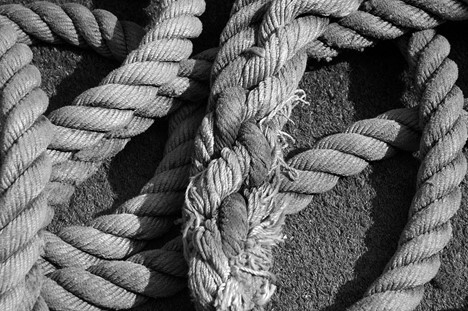
What to Look for During an Inspection
On cargo ships, the responsibility for inspecting ropes is assigned to a detached deckhand or group of deckhands. And you will have to do it yourself. Let's decide what weak points should be identified when inspecting mooring lines, and what to pay attention to.
You should be aware that signs of wear and damage to the mooring rope may include:
- knots and pegs;
- excessive established bending;
- abrasions;
- twisting;
- weakened areas;
- discolored areas;
- degradation of material, etc.
We indicated the reasons for such damage above. Now let’s add information on how such unfavorable changes in the structure of mooring lines can be prevented.
Do not allow direct sunlight or chemicals to come into contact with cables made from materials that will degrade and become deformed.
It is necessary to take care to protect against wear the mooring ends that you constantly use. For this, there are special sets made of leather or other durable materials. However, quite decent protection can be made from a piece of plastic hose secured to the cable with electrical tape.
Yes, and a simple plastic bottle, for example, can withstand friction well against the sharp edge of the pier, but it should be recognized that this is a temporary measure that you can resort to if special devices, such as cable braiding, which perfectly resists wear, fail. As a last resort, you can use any scrap of fabric or wool - far from ideal, but better than nothing.
The mooring lines should only be wound with the eyelet during maneuvers, especially if a mooring shock absorber is installed on them. With such fixation, the ends quickly fray - both on the bollard and on the eye; in addition, the shock absorber does not work as efficiently.
It is best to use a rubber shock absorber, although a steel spring will also work. During a storm, the main purpose of such a shock absorber is to reduce peak loads, which avoids mechanical damage to the yacht and rupture of mooring lines.
If the fastening on the pier does not inspire much confidence, then you should stretch an additional cable and secure it differently - for example, tie it to the supporting structure of the pier. Old wooden bollards should be treated with particular suspicion.
And of course, regular cleansing with of ropecleaner will protect ropes from the negative effects of marine fauna and flora.
Following these simple procedures will ensure safety for you and your crew while mooring in any mooring method, keep your yacht safe in adverse weather and save you from problems with your mooring neighbors.




